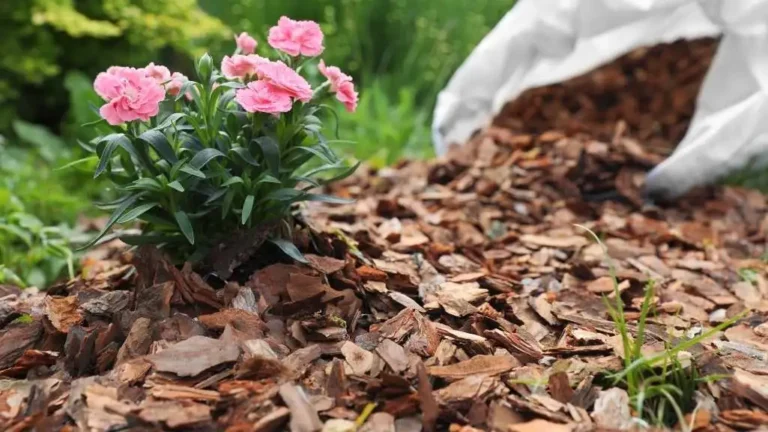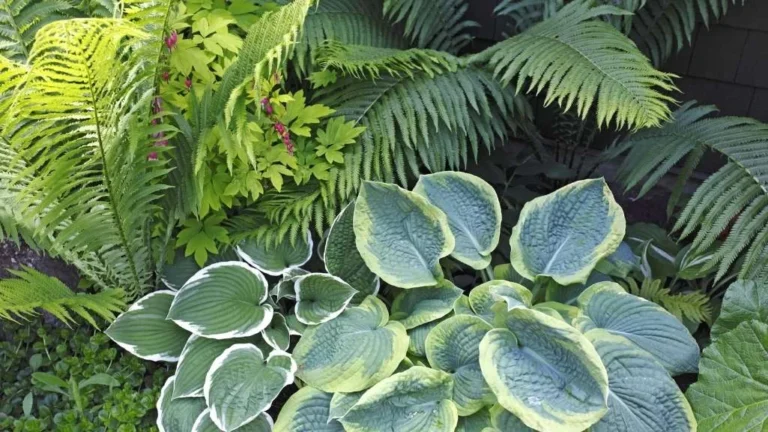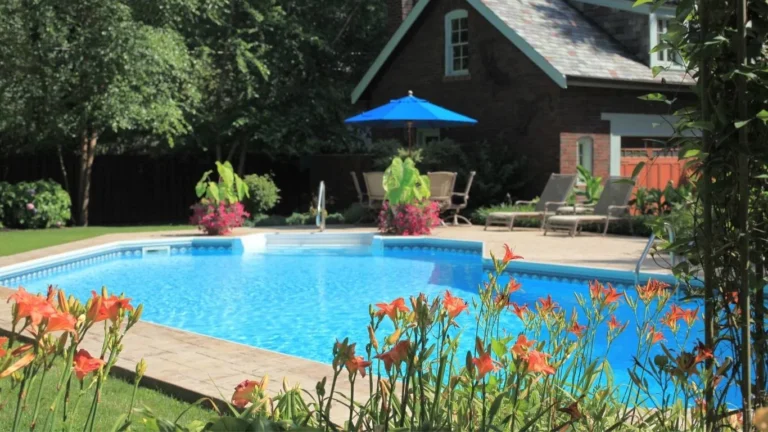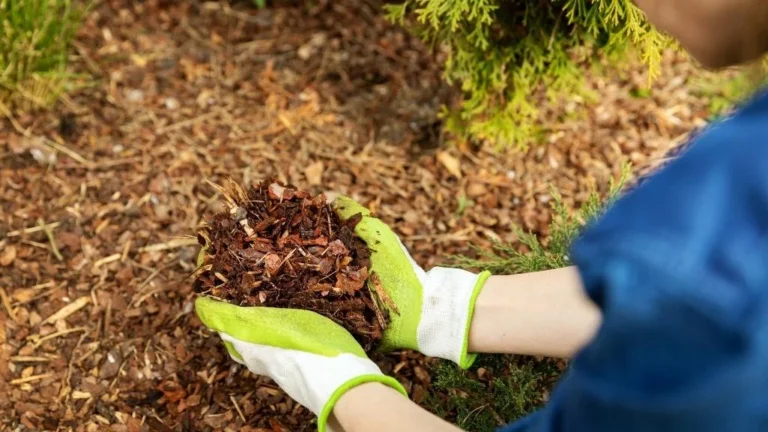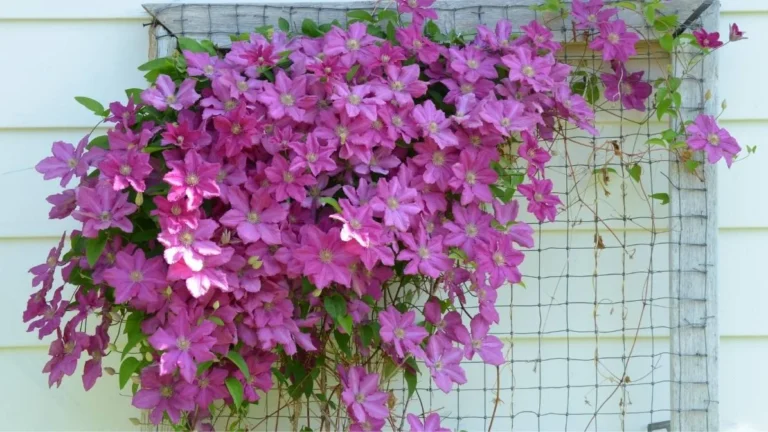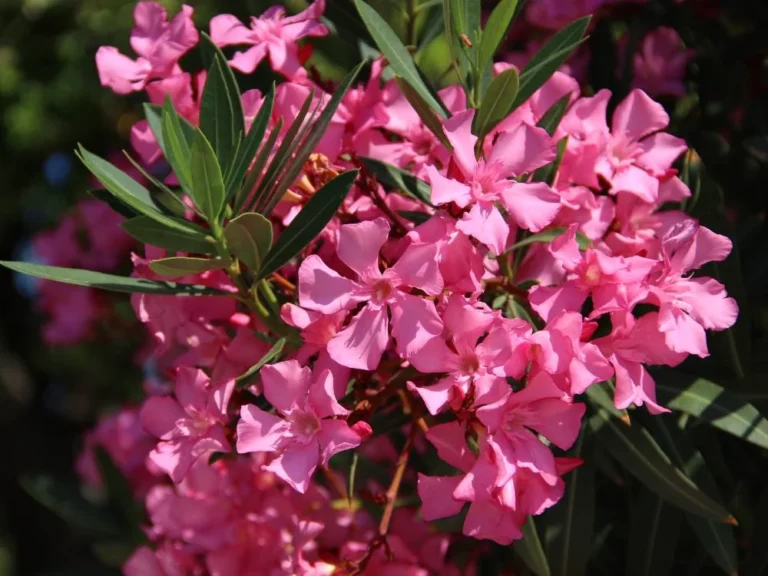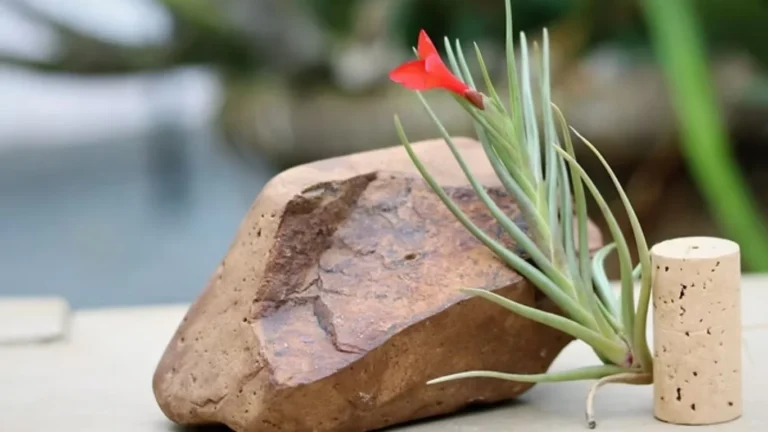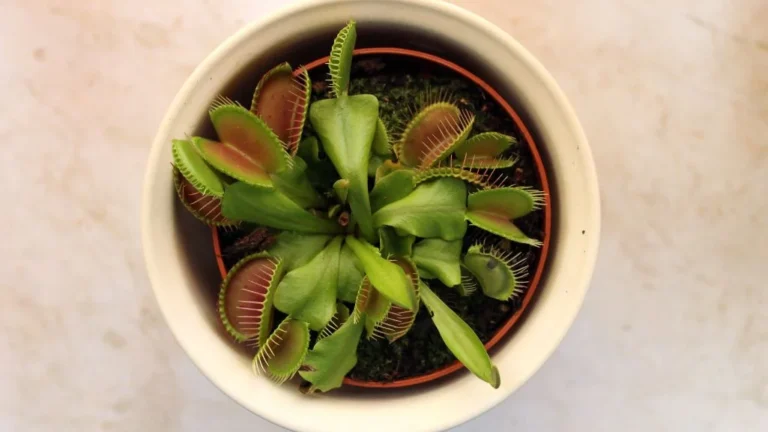The variegated money tree is a variant of the Pachira aquatica plant, known for its striking appearance. While the regular money tree features solid green leaves, the variegated version showcases leaves with beautiful patterns of white, cream, or yellow mixed with green. This variegation occurs due to a mutation that causes the plant to produce less chlorophyll in certain parts of the leaves, resulting in unique color patterns.
In this article, I will talk about the characteristics and growing requirements of the variegated money tree. Whether you’re a seasoned plant parent or just starting your indoor garden, this guide will help you learn everything related to the Variegated Money Tree.
Variegated Money Tree, At a Glance
Scientific name | Pachira aquatica |
Family | Malvaceae |
Native | Central and South America |
Hardiness Zone | USDA 10 to 12 |
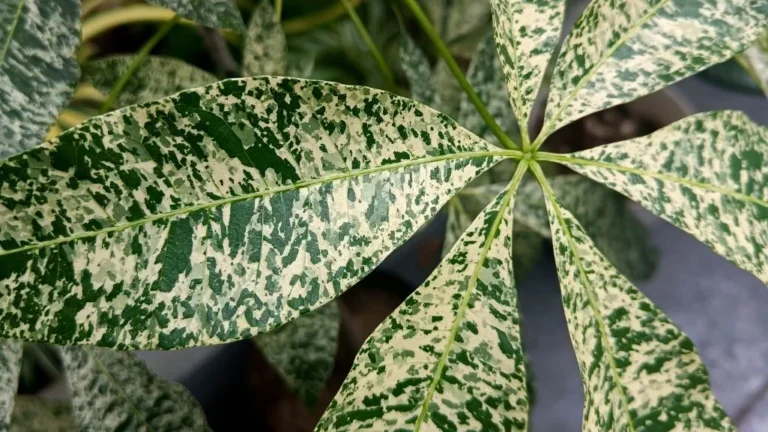
How Variegated Money Tree Looks
Leaves
The leaves of the variegated money tree are typically broad and spread out like the fingers of a hand. The variegation can vary widely from plant to plant, with some showing just a few splashes of white or cream while others may have almost completely white leaves.
Height
The variegated money tree can grow quite tall, often reaching heights of up to 6 to 8 feet indoors if given the right conditions. The plant is often braided when young, a popular practice that adds to its decorative appeal. Over time, the braided trunks can fuse, creating a beautiful, twisted effect.
Variegated Money Trees’ Growing Requirements
Caring for a variegated money tree is relatively simple, as the plant is known for its resilience and adaptability. However, there are a few specific requirements to keep in mind to ensure your plant stays healthy and vibrant.
Mix the Soil Properly
This plant grows in regions where it’s adapted to occasional flooding, which means it can survive in excessive moisture for a few days but is prone to root rot if waterlogged. Its roots are not meant to be constantly waterlogged and require oxygen to stay healthy. Prolonged wetness can create an environment where the roots can’t access enough oxygen, leading to root rot and other diseases. That is why variegated money trees require a soil mixture that ensures good drainage and aeration. I have used the following components for my variegated money tree.
Variegated money tree requires slightly acidic (6.0-6.5 pH) soil for optimal nutrition absorption.
- 50% peat moss for moisture retention while providing some acidity.
- 25% perlite for good drainage and ensuring aeration and
- 25% pine bark or orchid bark for improved drainage.
Alternatively, you can use a pre-made potting mix designed for tropical plants or cacti and succulents, which often have a well-draining composition suitable for the money tree.
Choose the Right Container
The roots of variegated money trees are fleshy, thick, shallow, and widespread. This means the roots tend to spread out rather than grow deeply, which helps them absorb nutrients and moisture from a broader area. So, while choosing a container, keep in mind the following things.
- The container should be slightly (1-2 inches) larger than the current root ball’s size.
- Ensure drainage holes below the container.
How Much Sunlight Variegated Money Tree Needs
Variegated money trees thrive in bright, indirect light. The variegation in the leaves means that the plant has less chlorophyll, so it needs more light to photosynthesize effectively.
- Place your plant near a window where it can receive plenty of natural light, but avoid direct sunlight, which can scorch the delicate leaves.
- If your home doesn’t have much natural light, you can supplement it with artificial grow lights. Just be sure to rotate the plant occasionally to ensure even growth.
I have placed my variegated money tree beside a window where it gets 4 to 5 hours of indirect, bright light throughout the day.
Maintain Humidity and Temperature
Variegated money trees prefer a humid environment, similar to their natural habitat in tropical regions.
- If your home’s environment is dry, like mine, use a humidifier.
- You can also mist the leaves regularly with water.
As for temperature, the variegated money tree does well in typical indoor temperatures ranging from 65°F to 80°F (18°C to 27°C). Avoid placing the plant under direct sun or near drafts.
When & How to Water
For my variegated money tree, I follow a simple watering routine:
- Every few days, I test the top inch of soil. If it feels dry, it’s time to water.
- I water thoroughly until it drains out the bottom, then let it dry out slightly before the next watering. I make sure not to let it sit in excess water to avoid root rot.
- In warmer months, I water about once a week; in cooler months, every 2-3 weeks.
Fertilizer for Variegated Money Tree
Variegated money trees do not need much fertilizer. It benefits from light and regular feeding during its growing season (spring and summer), but over-fertilizing can harm the plant. A diluted, balanced fertilizer once a month is usually sufficient. During the fall and winter, when the plant’s growth slows, you can reduce or stop fertilizing altogether.
When & How to Re-pot
Money trees like to be rootbound. So, these plants do not require frequent repotting. The plant needs re-potting in the following cases.
- When the roots start to come out of the drainage hole.
- Despite providing proper care and nutrition, the plant is not thriving.
In my case, I have observed that it needs repotting every 2 to 3 years.
Pruning and Maintenance
- Pruning your variegated money tree is important to maintain its shape and encourage bushier growth.
- Trim back any leggy or overgrown stems and remove any yellowing or damaged leaves.
- If the plant becomes too tall, you can also cut back the top to encourage side shoots to grow.
- Another aspect of maintenance is cleaning the leaves. Dust can accumulate on the leaves, blocking sunlight and reducing the plant’s ability to photosynthesize. Gently wipe the leaves with a damp cloth every few weeks to keep them clean and healthy.
Protect Variegated Money Tree from Pest
Like many houseplants, the variegated money tree can attract pests such as spider mites, aphids, and mealybugs.
- Regularly inspect the plant for any signs of pests.
- If you notice any pests, treat the plant with insecticidal soap or neem oil and isolate it from other plants to prevent the infestation from spreading.
Dealing with Common Issues
Leave yellowing
Yellowing leaves can be a sign of overwatering or poor drainage. Check the soil to ensure it’s not waterlogged, and adjust your watering routine if necessary. If the plant is in a pot without drainage holes, consider repotting it into one that allows excess water to escape.
Leaf Drop
If your variegated money tree is dropping leaves, it could be due to a sudden change in environment, such as a move to a new location or a shift in temperature. Give the plant some time to adjust, and make sure it’s in a stable environment with consistent light, temperature, and humidity levels.
Browning Leaf Edges
Browning leaf edges can be a sign of low humidity or too much direct sunlight. Increase the humidity around the plant by misting or using a humidifier, and move it to a location with bright, indirect light.
The variegated money tree is more than just a plant; it’s a living piece of art that brings beauty, symbolism, and a touch of nature into your home. With its unique variegated leaves, easy-care requirements, and the added bonus of being associated with good fortune, it’s no wonder that this plant is a favorite among indoor gardeners.
Whether you’re looking to add a new plant to your collection or seeking a thoughtful gift for someone special, the variegated money tree is an excellent choice. With the right care and attention, this plant will thrive and continue to bring joy and beauty into your life for years to come.



